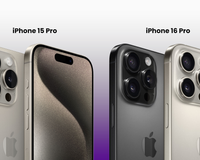E-waste is the world’s fastest growing waste stream. It’s our mission to tackle it – and you can help.
How many gadgets have you got in your house right now? And we’re not just counting the device you’re reading this on but that old mobile you set aside as a spare four years ago and haven’t touched since – and those digital cameras holding some memories you’d probably rather forget.
Imagine that multiplied by every house in the country. And imagine how much that figure is going to soar as Black Friday sales encourage us to replace perfectly good devices with newer still devices. According to research from Global Data, more than half of us who are planning to make a purchase during the Black Friday promotions will be buying a tech or electrical device.
 There are more mobile phones than humans now on the planet.
There are more mobile phones than humans now on the planet.
We live in a world where nearly every aspect of our lives is ruled by technology — we can’t live without it. But with the dawn of each new season, comes a newer model – faster, sexier and more powerful than ever before (or so we think). Blink twice and you’re likely to miss the latest software update, blink three times and your phone’s probably too old to cope with it.
There are now more devices connected to the internet than there are humans on this planet. Electronic waste, or e-waste, is fast becoming a global crisis. We at reboxed are here slow that shit down – but we need your help.
Let’s start with the facts. The latest UN report on global e-waste shared some pretty shocking statistics:
- In 2019, the world generated an enormous 53.6 Mt of e-waste, an average of 7.3kg per capita.
- This figure has grown by 9.2 Mt in the last five years and is predicted to climb to 74.7 Mt by 2030, meaning levels of e-waste per annum will have almost doubled in just 16 years.
- Although the global average for e-waste is 7.3kg per person, not everyone is equally responsible for this problem. Europe comes top in terms of e-waste generation per head, at 16.2 kg per capita.
- The UK generates more e-waste per person than any country in the world with the exception of Norway.
What is e-waste anyway?
E-waste describes discarded electrical or electronic devices. Made from a complex mix of materials such as platinum, lithium and cobalt (to name just a few), e-waste can be harmful to both human health and the environment. Recycling e-waste correctly could greatly reduce greenhouse gasses and CO2 emissions.
In 2016, a mere 20% of e-waste was correctly recycled
E-waste is also incredibly valuable. The same UN report found that in 2019, the estimated value of raw materials within global e-waste was $57 billion – but less than 20% is correctly recycled to allow for the recovery of these potentially valuable assets.

Environmental effects of e-waste
When e-waste becomes landfill, toxic materials from electronic devices are released into bodies of groundwater and soil affecting both land and sea animals. When the waste is warmed up, these harmful chemicals are released into the air and can have a detrimental effect on the atmosphere.
Many people don’t realise that some recycling plants — even trusted or credible ones — ship their e-waste abroad to extract minerals and repurpose parts. While that doesn’t sound terrible, it comes at an enormous cost to local populations. Methods used are almost always improper. In some places, gold is recovered by bathing circuit boards in nitric and hydrochloric acid, which poisons vital waterways and harms local communities.
50–80% of the world’s e-waste is recycled in informal markets in China, Africa, India, Pakistan, Vietnam and the Philippines

‘Burner Boys’ sell copper that they extract by burning electronic waste but risk their health to do so
Last summer, for example, the House of Commons Environmental Audit Select Committee heard how in Agbogbloshie, Ghana, toxins from e-waste were linked to the contamination of chicken eggs. As the Committee’s report states, “Agbogbloshie is a scrap yard and slum where 80,000 residents primarily subsist by retrieving metals from e-waste, some of which originated in Europe”.
Sadly, the situation is not aided by the fact that only 20% of global e-waste is formally recycled. The remaining 80% is often incinerated, dumped in landfill or moved around the globe to be taken apart in such settings in Africa and Asia. The EU ranked the UK as one of the worst offenders for this. This obscene form of urban mining has damaging consequences to both the people and the landscape of these areas, creating untold pollution that we’ll be fighting against for decades to come.

The solution: A circular economy
While combating the rapidly expanding issue of e-waste won’t be easy, one of the first steps we can take is to appreciate our “old” devices. If we can increase the longevity of more affordable, accessible and environmentally friendly tech, we can help reduce the problem of e-waste before it becomes the next plastic pollution crisis.
How can we do this? By moving from the current linear economy to a circular one.
But what is a circular economy, aka circularity? Put simply, it’s an economic system aimed at eliminating waste through the continual use and reuse of resources. Instead of the traditional linear model of “take, make, waste”, the circular economy is a regenerative approach that is both sustainable and creates better value for customers thanks to the increased reuse of products.
The concept of a circular economy encourages a total rethink and redesign of the way we make stuff and its overall lifecycle. And it’s the direction we all need to move in. In July 2019, the UK Environmental Audit Committee launched a new inquiry into electronic waste and the benefits of encouraging a circular economy. The British government has declared its commitment to finding solutions to the e-waste issue, and other countries — such as India — have now followed suit. They’re committed to designing and assisting new circular models that will actively support our economies, our wellbeing and our planet.
So over to you
We love the idea of creating a circular economy and you bet we’re here for it. reboxed is all about reusing or refurbishing existing products to keep the materials in circulation at their highest value for the longest time.
But, no matter how large our commitment to the reduction of e-waste is (it’s pretty huge), we need your help to make it happen at scale. What can you do?
The answer is simple
The answer is simple. When you need to upgrade your phone, visit reboxed.co and choose to rehome a phone. When you order a reboxed device over the latest all-singing, all-dancing model, you’re taking a stand against our global e-waste issue. Reducing e-waste and keeping our devices in circulation for longer is a realistic remedy that we can all action — and save a few pounds while we’re at it.
We offer a wide range of better than new iPhone and Android handsets as well as a swap-your-phone scheme (currently limited to London only). Soon we’ll also be introducing recycling schemes for a whole range of tech devices, so stay in touch on social media to hear the latest about those services and be the first to know about our latest developments.
Change won’t happen overnight, but together we can build a movement that will alter perceptions about refurbished technology and assist in the recovery and preservation of our planet, one device at a time.
Join us on our mission to rehome 100 million devices, and help fight e-waste, make a better choice today, create a better future tomorrow.
Join the revolution: @reboxed


![The Best iPhones for battery life ranked [2025]](http://reboxed.co/cdn/shop/articles/IPHONE-BATTERY_e2de6230-b1d2-4348-ac33-e47d1e267bdd_100x80_crop_center@2x.jpg?v=1738489925)




